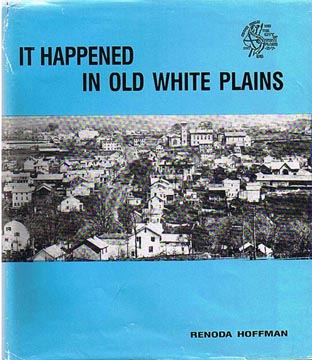

Birthplace of New York StateThe Declaration of Independence, America's most famous document, is forever linked in history to White Plains. The Declaration, our nation's birth certificate, set the stage for the birth of New York State here. It all began in 1776 when George III's warships, filled with soldiers, sailed into New York harbor. The Third Provincial Congress, meeting in the city, hurriedly left, and on the morning of July 9th reconvened in the modest wooden courthouse on the Village Street in White Plains. General Nathaniel Woodhull, destined to lose his life a few weeks later in the battle on Long Island, was elected president of the body. Westchester was represented by 12 deputies, all of whom were present that day: Colonel Pierre Van Cortlandt, Colonel Louis Graham, Major Ebenezer Lockwood, Captain Jonathan Platt, Colonel Gilbert Drake, General Lewis Morris, Governeur Morris, William Paulding, Zebediah Mills, Jonathan G. Tompkins, Samuel Crawford and Samuel Haviland. John Jay representing New York City, was also in attendance. In the morning a courier, having ridden from Philadelphia, finally caught up with the congress and delivered a document from the Continental Congress that declared the 13 colonies free and independent from Britain. This document was handed to a five-man committee chaired by Jay for recommendation. That afternoon, despite the presence of the enemy in New York City and their personal danger, the group returned the recommendation that the independence document be approved. The resulting resolution penned that day bore a new designation for the body. "Convention of the Representatives of the State of New York" it commenced, then continued: "White Plains, July 9th, 1776: Resolved unanimously that the reasons assigned by the Continental Congress for declaring the United Colonies free and independent STATES are cogent and conclusive and that while we lament the cruel necessity which had rendered that measure unavoidable, we approve same and will at the RISQUE of our Lives and Fortunes join with the other colonies in defending it." After this resolution had been carefully transcribed by the clerk, could some lingering doubt concerning the course they had chosen have been the reason for a slight change then ordered in the resolution? The word "defending" was neatly scratched out, and inserted above was the word "supporting." Certainly the men who signed that resolution in White Plains were fully aware that the substitution of one word for another could not mitigate what, in the eyes of the British, was a heinous crime, punishable by death. Five hundred handbills were ordered printed and handed out on July 11th, when Judge John Thomas of Purchase read the Declaration of Independence "to the beat of drums" from the courthouse steps. It was the first time these stirring words had been heard in public in New York, and it happened in White Plains. The change of name for the Congress, "state" being substituted for "provincial" in the resolution, coupled with the reading of the Declaration made White Plains the state's birthplace. From July 9th to July 27th, when Congress adjourned, White Plains remained the seat of the revolutionary government. Furthermore, work on the first constitution for the State of New York was begun here. The finalized constitution was adopted by the convention at Kingston on the Hudson on April 20th, 1777. An original handbill on display in the lobby of the County Office Building in White Plains is one of only three known to remain in existence. |